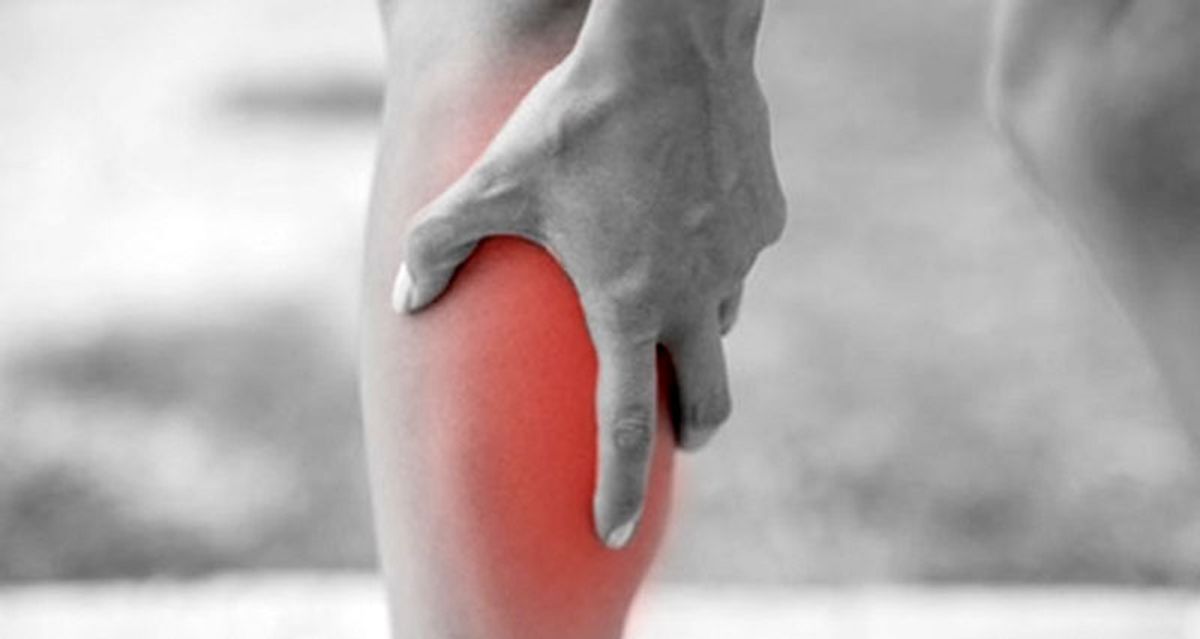Calf pain occurs in the muscles located at the back of the lower leg. The most common cause of sudden onset pain is a calf muscle strain, while compartment syndromes develop gradually over time.
In this explanation, we address the common causes of both sudden and gradual onset calf pain, as well as important conditions that should not be overlooked during the diagnosis of calf injuries.
Sudden onset (acute) calf pain
The following injuries are common causes of sudden onset or acute calf pain.
Calf strain
Common causes of sudden onset or acute calf pain include:
- Sudden sharp pain at the back of the lower leg
- Tenderness when applying pressure
- Possible swelling and/or bruising (but not always)
Calf contusion
A contusion, resulting from a direct impact or trauma to the calf muscles, can cause the following symptoms:
- Sudden calf pain at the point of impact
- Pain can range from mild to severe, potentially hindering walking ability
- Tenderness or pain when palpating (feeling) the affected area
- Possible presence of bruising and/or swelling (although not always)
Cramp
Cramp in the calf muscles is characterized by a powerful and painful involuntary contraction. It typically happens towards the end of an intense training session or possibly a few hours later.
Symptoms include:
- Sudden and involuntary muscle contraction
- Stretching the muscles often relieves the muscle spasm
Gradual onset (chronic) calf pain
The following are common causes of gradual onset or chronic calf pain:
Posterior compartment syndrome
Posterior compartment syndrome happens when the muscle swells, exceeding the capacity of its surrounding sheath. It can be categorized into acute and chronic forms.
Acute symptoms:
- Sudden onset following a contusion or direct trauma to the muscle
- Increasingly severe pain over time
- Requires immediate medical attention to prevent long-term damage
Chronic symptoms:
- Deep aching pain or tightness in the back of the lower leg
- Gradual development of pain during a run, relieved by rest
- Experienced runners notice consistent pain at a specific point during a run
Read more on posterior compartment syndrome
Lateral compartment syndrome
Lateral compartment syndrome, similar to posterior compartment syndrome, can occur in both acute and chronic forms, but the pain is located on the outside of the calf muscles.
It is more commonly seen as a chronic injury in long-distance runners.
Read more on lateral compartment syndrome
Tight calf muscles
Tight muscles at the back of the lower leg are a common issue among athletes and can contribute to related injuries.
The tightness of calf muscles can be caused by:
- Poor foot biomechanics
- Insufficient stretching
- Regular use of high-heeled shoes
Partial contraction or spasms in the calf muscles restrict blood and nutrient flow, leading to discomfort and pain. Untreated, this can elevate the risk of experiencing a more severe and acute injury.
Read more on tight calf muscles
Deep vein thrombosis
Deep vein thrombosis (DVT) is a potential cause of calf pain that should be carefully considered. It involves the formation of blood clots in the veins, often occurring in the calf region, particularly after extended flights or surgery.
While less common than the aforementioned injuries, DVT is a serious condition that should never be ignored or overlooked. If suspected, immediate medical assistance is crucial.
Fibula stress fracture
The calf muscles can exert traction and twisting forces on the fibula bone, potentially leading to a stress fracture.
Symptoms include:
- Pain at the back of the lower leg, towards the outer side
- Difficulty bearing weight
- Pain escalating during exercise
Read more on fibula stress fracture
Fibula fracture
A fibula fracture is a break in the fibula bone of the lower leg. It can occur as either a sudden acute fracture or a gradual stress fracture.
- Fractures are typically evident and noticeable.
- Severe pain quickly follows an impact, collision, or fall, often accompanied by rapid swelling.
- Weight-bearing becomes impossible, and the lower leg may exhibit deformity.
Other causes of calf pain:
Calf pain can be caused by referred pain from other body parts, resulting in pain in the calf.
It may originate from:
- Spinal injuries
- Knee injuries (including Baker’s cyst and PCL injuries)
- Myofascial tissue structures, especially in the gluteal muscles
- Trapped arteries or vessels, such as the popliteal artery
- Trapped tibial and sural nerves in the calf area

